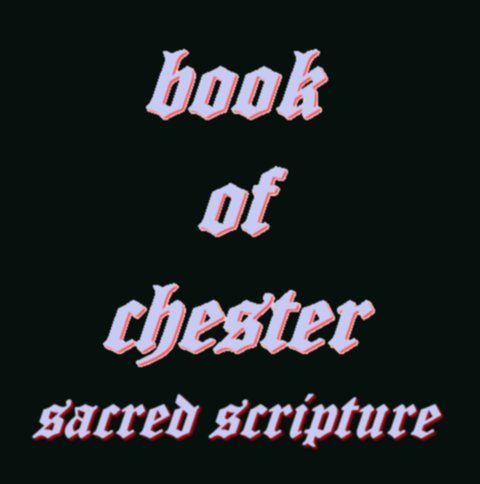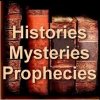
Introduction
Preface Second Ed.
Preface Third Ed.
Note by the Editor
The Two Systems
Trinity in Unity
Mother and Child
The Child in Assyria
The Child in Egypt
The Child in Greece
Death of the Child
Deification of the Child
Mother of the Child
Christmas
Easter
Nativity of John
Feast of thr Assumption
Baptismal Regeneration
Justification by Works
Sacrifice of the Mass
Extreme Unction
Purgatory and Prayers for the Dead.
Idol Processions
Relic Worship.
Clothing and Crowning of Images.
The Rosary
Lamps & Wax-candles
Sign of the Cross
Sovereign Pontiff
Priests, Monks, and Nuns.
Great Red Dragon
Beast From the Sea
Beast from the Earth
Image of the Beast
Number of the Beast
Invisible Head of the Papacy
Woman with Golden Cup
Hebrew Chronology
Shing Moo and Ma Tsoopo of China.
Ala-Mahozim
Meaning of the name Centaurus
Olenos, the Sin-Bearer
Identification of Rhea or Cybele and Venus
Virgin Mother of Paganism
Goddess Mother as a Habitation.
Meaning of the name Astarte.
Oannes and Souro
The Identity of the Scandinavian Odin and Adon of Babylon
Stripping of the Clothes of the Initiated in the Mysteries
Zoroaster, the Head of the Fire-Worshippers
Story of Phaethon
Roman Imperial Standard of the Dragon of Symbol of Fire-worship
The Slaying of the Witness
Attes, the Sinner
Click here for The Reluctant Messenger (Host Site)
SUB-SECTION II.
THE CHILD IN EGYPT.
When we turn to Egypt we find remarkable evidence of the same thing there also. Justin, as we have already seen, says that "Ninus subdued all nations, as far as Lybia," and consequently Egypt. The statement of Diodorus Siculus is to the same effect, Egypt being one of the countries that, according to him, Ninus brought into subjection to himself. * In exact accordance with these historical statements, we find that the name of the third person in the primeval triad of Egypt was Khons. But Khons, in Egyptian, comes from a word that signifies "to chase." * Therefore, the name of Khons, the son of Maut, the goddess-mother, who was adorned in such a way as to identify her with Rhea, the great goddess-mother of Chaldea, * properly signifies "The Huntsman," or god of the chase. As Khons stands in the very same relation to the Egyptian Maut as Ninus does to Rhea, how does this title of "The Huntsman" identify the Egyptian god with Nimrod? Now this very name Khons, brought into contact with the Roman mythology, not only explains the meaning of a name in the Pantheon there, that hitherto has stood greatly in need of explanation, but causes that name, when explained, to reflect light back again on this Egyptian divinity, and to strengthen the conclusion already arrived at. The name to which I refer is the name of the Latin god Consus, who was in one aspect identified with Neptune, * but who was also regarded as "the god of hidden counsels," or "the concealer of secrets," who was looked up to as the patron of horsemanship, and was said to have produced the horse. * Who could be the "god of hidden counsels," or the "concealer of secrets," but Saturn, the god of the "mysteries," and whose name as used at Rome, signified "The hidden one"? * The father of Khons, or Khonso (as he was also called), that is, Amoun, was, as we are told by Plutarch, known as "The hidden God;" * and as father and son in the same triad have ordinarily a correspondence of character, this shows that Khons also must have been known in the very same character of Saturn, "The hidden one." If the Latin Consus, then, thus exactly agreed with the Egyptian Khons, as the god of "mysteries," or "hidden counsels," can there be a doubt that Khons, the Huntsman, also agreed with the same Roman divinity as the supposed producer of the horse? Who so likely to get the credit of producing the horse as the great huntsman of Babel, who no doubt enlisted it in the toils of the chase, and by this means must have been signally aided in his conflicts with the wild beasts of the forest? In this connection, let the reader call to mind that fabulous creature, the Centaur, half-man, half-horse, that figures so much in the mythology of Greece. That imaginary creation, as in generally admitted, was intended to commemorate the man who first taught the art of horsemanship. * But that creation was not the offspring of Greek fancy. Here, as in many other things, the Greeks have only borrowed from an earlier source. The Centaur is found on coins struck in Babylonia , * showing that the idea must have originally come from that quarter. The Centaur is found in the Zodiac , * the antiquity of which goes up to a high period, and which had its origin in Babylon. The Centaur was represented, as we are expressly assured by Berosus, the Babylonian historian, in the temple of Babylon, * and his language would seem to show that so also it had been in primeval times. The Greeks did themselves admit this antiquity and derivation of the Centaur; for though Ixion was commonly represented as the father of the Centaurs, yet they also acknowledge that the primitive Centaurus was the same as Kronos, or Saturn, the father of the gods. * But we have seen that Kronos was the first King of Babylon, or Nimrod; consequently, the first Centaur was the same. Now, the way in which the Centaur was represented on the Babylonian coins, and in the Zodiac, viewed in this light, is very striking. The Centaur was the same as the sign Sagittarius, or "The Archer." * If the founder of Babylon's glory was "The mighty Hunter," whose name, even in the days of Moses, was proverb--(Gen. x. 9. "Wherefore, it is said, Even as Nimrod, the mighty hunter before the Lord")--when we find the "Archer" with his bow and arrow, in the symbol of the supreme Babylonian divinity, * and the "Archer," among the signs of the Zodiac that originated in Babylon, I think we may safely conclude that this Man-horse or Horse-man Archer primarily referred to him, and was intended to perpetuate the memory at once of his fame as a huntsman and his skill as a horse-breaker.
Now, when we thus compare the Egyptian Khons, the "Huntsman," with the Latin Consus, the god of gorse-races, who "produced the horse," and the Centaur of Babylon, to whom was attributed the honour of being the author of horsemanship, while we see how all the lines converge in Babylon, it will be very clear, I think, whence the primitive Egyptian god Khons has been derived.
Khons, the son of the great goddess-mother, seems to have been generally represented as a full-grown god. * The Babylonian divinity was also represented very frequently in Egypt in the very same way as in the land of his nativity--i.e., as a child in his mother's arms. * This was the way in which Osiris, "the son, the husband of his mother," was often exhibited, and what we learn of this god, equally as in the case of Khonso, shows that in his original he was none other than Nimrod. It is admitted that the secret system of Free Masonry was originally founded on the Mysteries of the Egyptian Isis, the goddess-mother, or wife of Osiris. But what could have led to the union of a Masonic body with these Mysteries, had they not had particular reference to architecture, and had the god who was worshipped in them not been celebrated for his success in perfecting the arts of fortification and building? Now, if such were the case, considering the relation in which, as we have already seen, Egypt stood to Babylon, who would naturally be looked up to their as the great patron of the Masonic art? * The strong presumption is, that Nimrod must have been the man. He was the first that gained fame in this way. As the child of the Babylonian goddess-mother, he was worshipped, as we have seen, in the character of Ala mahozim, "The god of fortifications," Osiris, in like manner, the child of the Egyptian Madonna, was equally celebrated as "the strong chief of the buildings." * This strong chief of the buildings was originally worshipped in Egypt with every physical characteristic of Nimrod. I have already noticed the fact that Nimrod, as the son of Cush, was a negro. Now, there was a traditional Egypt, recorded by Plutarch, that "Osiris was black," * which, in a land where the general complexion was dusky, must have implied something more than ordinary in its darkness. Plutarch also states that Horus, the son of Osiris, "was of a fair complexion," * and it was in this way, for the most part, that Osiris was represented. But we have unequivocal evidence that Osiris, the son and husband of the great goddess-queen of Egypt, was also represented as a veritable negro. In Wilkinson may be found a representation of him * with the unmistakable features of the genuine Cushite or negro. Bunsen would have it that this is a mere random importation from some of the barbaric tribes; but the dress in which this negro god is arrayed tells a different tale. That dress directly connects him with Nimrod. This negro-featured Osiris is clothed from head to foot in a spotted dress, the upper part being a leopard's skin, the under part also being spotted to correspond with it. Now the name Nimrod * signifies "the subduer of the leopard." This name seems to imply, that as Nimrod had gained fame by subduing the horse, and so making use of it in the chase, so his fame as a huntsman rested mainly on this, that he found out the art of making the leopard aid him in hunting the other wild beasts. A particular kind of tame leopard is used in India at this day for hunting; and of Bagajet I., the Mogul Emperor of India, it is recorded that in his hunting establishment he had not only hounds of various breeds, but leopard also, whose "collars were set with jewels." * Upon the words of the prophet Habakkuk, chap.i.8, "swifter than leopards," Kitto has the following remarks:--"The swiftness of the leopard is proverbial in all countries were it is found. This, conjoined with its other qualities, suggested the idea in the East of partially training it, that it might be employed in hunting..... Leopards are now rarely kept for hunting in Western Asia, unless by kings and governors; but they are more common in the eastern parts of Asia. Orosius relates that one was sent by the king of Portugal to the Pope, which excited great astonishment by the way in which it overtook, and the facility with which it killed, deer and wild boars. Le Bruyn mentions a leopard kept by the Pasha who governed Gaza, and the other territories of the ancient Philistines, and which he frequently employed in hunting jackals. But it is in India that the cheetah, or hunting leopard, is most frequently employed, and is seen in the perfection of his power." * This custom of taming the leopard, and pressing it into the service of man in this way, is traced up to the earliest times of primitive antiquity. In the works of Sir William Jones, we find it stated from the Persian legends, that Hoshang, the father of Tahmurs, who built Babylon, was the "first who bred dogs and leopards for hunting." * As Tahmurs, who built Babylon, could be none other than Nimrod, this legend only attributes to his father what, as his name imports, he got the fame of doing himself. Now, as the classic god bearing the lion's skin is recognised by that sign as Hercules, the slayer of the Nemean lion, so in like manner, the god clothed in the leopard's skin would naturally be marked out as Nimrod, the "leopard-subduer." That this leopard skin, as appertaining to the Egyptian god, was no occasional thing, we have clearest evidence. Wilkinson tells us, that on all high occasions when the Egyptian high priest was called to officiate, it was indispensable that he should do so wearing, as his robe of office, the leopard's skin . * As it is a universal principle in all idolatries that the high priest wears the insignia of the god he serves, this indicates the importance which the spotted skin must have had attached to it as a symbol of the god himself. The ordinary way in which the favourite Egyptian divinity Osiris was mystically represented was under the form of a young bull or calf--the calf Apis--from which the golden calf of the Israelites was borrowed. There was a reason why that calf should not commonly appear in the appropriate symbols of the god he represented, for that calf represented the divinity in the character of Saturn, "The HIDDEN one," "Apis" being only another name for Saturn. * The cow of Athor, however, the female divinity corresponding to Apis, is well known as a "spotted cow," * and it is singular that the Druids of Britain also worshipped "a spotted cow." * Rare though it be, however, to find an instance of the deified calf or young bull represented with the spots, there is evidence still in existence, that even it was sometimes so represented. The accompanying figure represents that divinity, as copied by Col. Hamilton Smith "from the original collection made by the artists of the French Institute of Cairo." * When we find that Osiris, the grand god of Egypt, under different forms, was thus arrayed in a leopard's skin or spotted dress, and that the leopard-skin dress was so indispensable a part of the sacred robes of his high priest, we may be sure that there was a deep meaning in such a costume. And what could that meaning be, but just to identify Osiris with the Babylonian god, who was celebrated as the "Leopard-tamer," and who was worshipped even as he was, as Ninus, the CHILD in his mother's arms?
Previous | Next
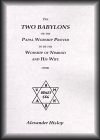
or The Papal Worship Proved to be the Worship of Nimrod and His Wife
$3.99 Kindle eBook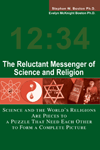
Buy from Amazon.com
The Essential Teachings of Herbert W. Armstrong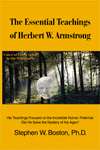
His Teachings Focused on The Incredible Human Potential. Did He Solve the Mystery of the Ages?
New Book about HWA's Teachings. Recommended!

